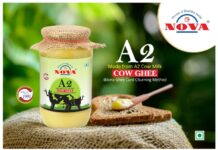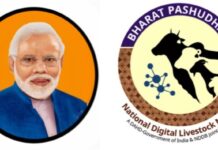By Tamal Chatterjee ,VP marketing of Sid’s Farm
India stands tall as the world’s largest milk producer, accounting for an impressive 24 per cent of global milk production, as per the Food and Agriculture Organization of the United Nations (FAO). The dairy sector in India is not just an industry; it’s an integral part of the country’s cultural and economic fabric, employing over 80 million rural households and contributing significantly to rural livelihoods, according to the National Dairy Development Board (NDDB). Over the years, the sector has witnessed remarkable growth, with milk production increasing from 137.9 million tonnes in 2014 to 219.9 million tonnes in 2021, at a compound annual growth rate (CAGR) of 4.6 per cent, as per NDDB data.
In recent years, a transformative shift has been observed in the Indian dairy industry, marked by the emergence of the direct-to-consumer (D2C) segment. This has been driven by the emergence of direct-to-consumer (D2C) dairy brands and a paradigm shift in branding imperatives. Long dominated by traditional brick-and-mortar retail channels, the industry has witnessed a surge in consumer demand for convenience, freshness, and transparency, paving the way for D2C platforms to disrupt the established order.
The Indian D2C dairy market is rapidly growing, with a market size of around Rs 1,500 crore as of 2022, according to RedSeer Consulting. The market is expected to reach Rs 5,000 crore by 2025, at a CAGR of over 40 percent. This dynamic force is fuelled by the rapid adoption of e-commerce and the growing demand for fresh, high-quality dairy products. D2C platforms have revolutionised the way consumers purchase dairy products, providing them with greater convenience, transparency, and access to a wider variety of products.
In an era dominated by data-driven decision-making, performance marketing has emerged as the linchpin for D2C dairy brands. The measurable impact of every marketing endeavour, from clicks to conversions, provides a tangible framework for marketers. According to a recent study by McKinsey, data-driven marketing strategies result in a 15-20 per cent increase in marketing efficiency.
The Marketing Efficiency Ratio (MER) has become a critical tool in this evolving landscape. By pinpointing underperforming channels, marketers can make informed decisions on resource allocation, ensuring optimal returns. This data-centric approach aligns with the financial imperatives of new-age D2C dairy brands, where accountability for every marketing rupee invested is paramount. While financial viability takes precedence, the role of branding in this scenario is nuanced. The challenge lies in striking a delicate equilibrium, where branding initiatives contribute to enhanced customer retention and heightened Life Time Value (LTV). According to a report by Nielsen, effective branding can result in a 15-20 percent increase in customer loyalty.
Navigating the nascent premium D2C dairy segment is a formidable task, with the current focus centred on building awareness and assisting consumers in making informed choices. Market dynamics are still stabilizing, necessitating a patient approach. As reported by Euromonitor International, the premium dairy segment in India is projected to grow at a CAGR of 12 percent over the next five years.
Yet, there exists a subtle tension between immediate gains and long-term brand sustainability. The Fear of Missing Out (FOMO) often compels marketers to follow trends rather than align efforts with the unique personality and needs of the brand. An earlier study by Harvard Business Review indicates that brands aligning their marketing strategies with their brand identity experience a 30 per cent higher customer satisfaction rate. This holds even more true for D2C dairy marketers. In a world where attention spans are shrinking (currently averaging 8.25 seconds), content reigns supreme. Visual storytelling through images and videos has become imperative for engagement. However, as audiences grow fatigued with repetitive tactics, a shift in strategy will be imperative.
As the industry matures, a seismic shift in consumer behaviour is anticipated. The longevity of D2C dairy brands hinges not only on immediate gains but also on the cultivation of enduring consumer relationships through long-term branding strategies. The D2C model has disrupted the traditional dairy supply chain, eliminated intermediaries, and enabled direct delivery of fresh milk and milk products to consumers’ doorsteps. This has revolutionized consumer preferences, offering them a more convenient, personalised, and transparent purchasing experience. According to the reports published in www.financialexpress.com .
Investing in long-term branding is crucial for sustainable success in the D2C dairy industry. Brands that prioritise building strong brand foundations will reap the rewards in the long run, fostering customer loyalty and driving organic growth.


















![Poolani Milk Cooperative Society [PMCS] well-established and fastest-growing in the Dairy Sectorof RuralKerala](http://thedairytimes.com/wp-content/uploads/2024/04/1-218x150.jpg)









![Poolani Milk Cooperative Society [PMCS] well-established and fastest-growing in the Dairy Sectorof RuralKerala](http://thedairytimes.com/wp-content/uploads/2024/04/1-100x70.jpg)


